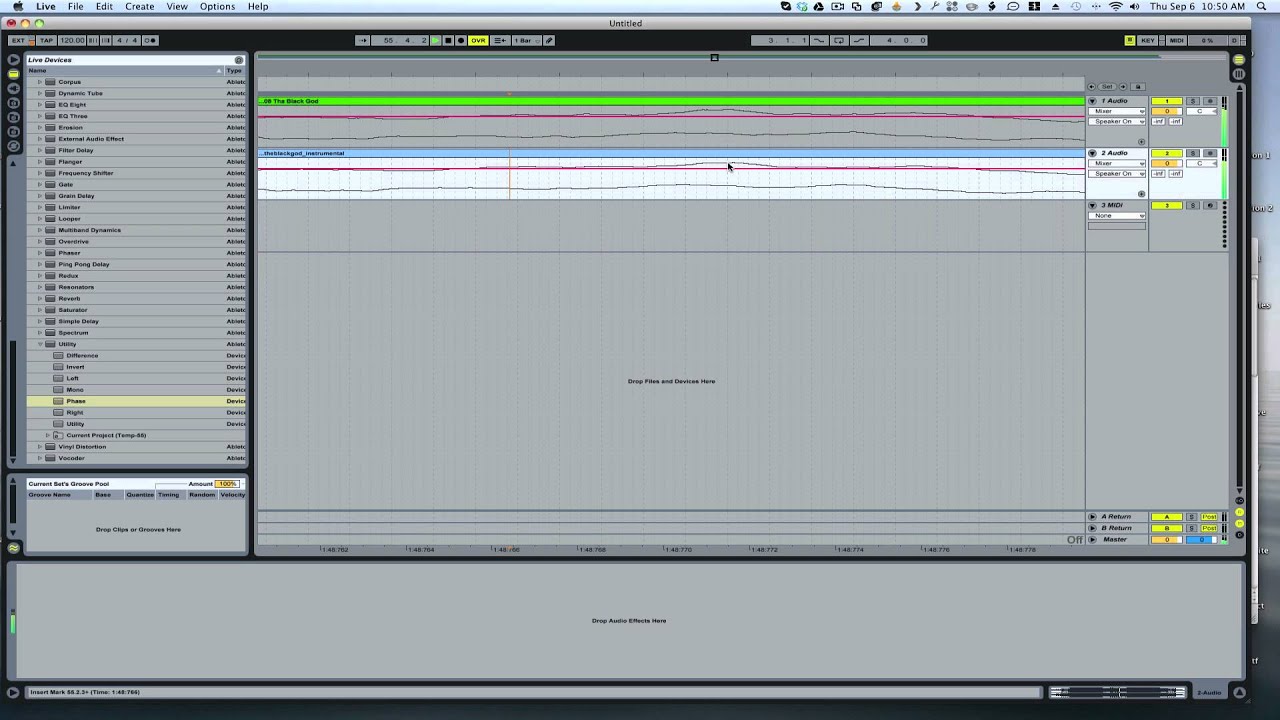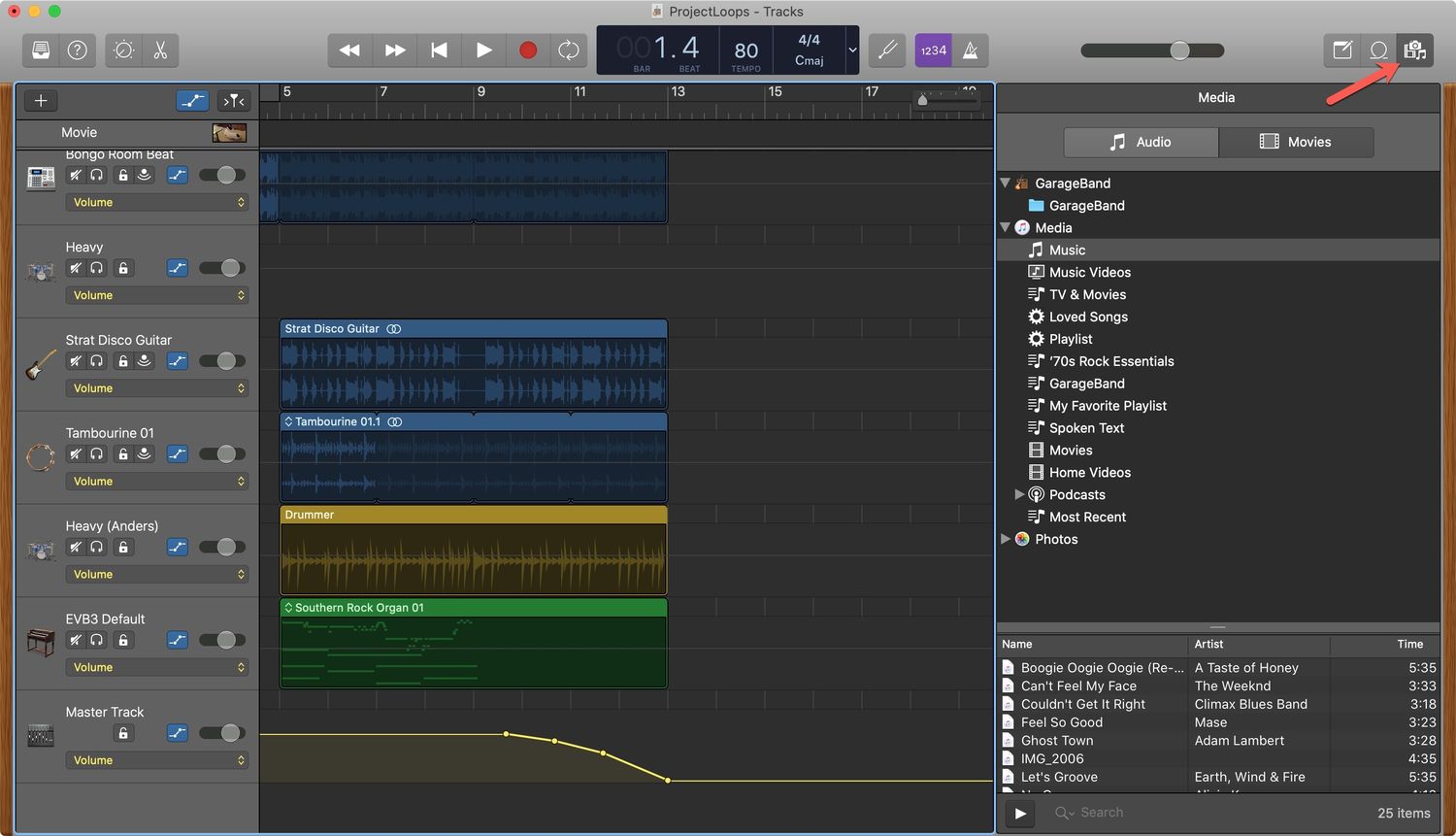Home>Events & Info>Acapella>How To Arrange Acapella Music


Acapella
How To Arrange Acapella Music
Modified: January 22, 2024
Learn how to arrange breathtaking acapella music with these expert tips and techniques. Unleash the full potential of your vocal harmonies and create stunning acapella arrangements that captivate your listeners.
(Many of the links in this article redirect to a specific reviewed product. Your purchase of these products through affiliate links helps to generate commission for AudioLover.com, at no extra cost. Learn more)
Table of Contents
Introduction
Have you ever been captivated by the pure vocal harmonies of an acapella group? Acapella music, with its unique ability to convey emotion and energy through the human voice alone, has been captivating audiences for centuries. From barbershop quartets to modern acapella ensembles like Pentatonix, this genre of music has evolved and continues to mesmerize listeners around the world.
In this article, we will explore the art of arranging acapella music and discover the key elements that go into creating a captivating and engaging performance. Whether you’re a seasoned acapella performer or just starting out, these tips and techniques will help you create arrangements that showcase the beauty and power of the human voice.
Arranging acapella music is not a one-size-fits-all process – it requires careful consideration of song choice, melody lines, harmonies, dynamics, vocal percussion, effects, and more. It’s about understanding the strengths and limitations of the human voice and finding ways to make it shine.
Join us on this journey as we delve into the world of acapella arrangement and uncover the secrets to creating breathtaking vocal performances that will leave audiences in awe.
Choosing the Right Songs for Acapella Arrangement
The first step in creating a captivating acapella arrangement is selecting the right songs. Not all songs are suitable for acapella performance, so it’s important to choose pieces that lend themselves well to vocal harmonies and can be effectively arranged for multiple voices.
When choosing songs, consider the following:
- Vocal Range: Select songs that have a range that can be comfortably sung by the members of your acapella group. This will ensure that everyone can contribute to the arrangement and showcase their vocal abilities.
- Harmonic Structure: Look for songs with a strong and interesting harmonic structure. Chords and chord progressions are the foundation of acapella music, so choosing songs that provide ample opportunities for creative harmonies will elevate your arrangement.
- Lyrics and Melody: Pay attention to the lyrical content and melody of the song. Choose pieces that resonate with your group and allow for emotional connection and expression. Remember, acapella music relies solely on the power of the voice to convey the meaning and emotion of a song.
- Popular Demand: Consider the taste and preferences of your target audience. Choosing popular songs or recognizable hits can help captivate listeners and create a connection with your performance.
Additionally, be sure to consider the technical limitations of your group. If you have a limited number of vocalists or specific voice types, choose songs that can be effectively arranged for your ensemble.
Once you have a shortlist of potential songs, listen to recordings of different acapella versions to gather inspiration and see how other groups have approached the arrangement. This will give you ideas on how to structure your own arrangement and add your unique touch.
Remember, when selecting songs for acapella arrangement, keep in mind the strengths and limitations of your group, the harmonic structure, lyrical content, and the preferences of your audience. With the right song choice, you’re off to a great start in creating an engaging and memorable acapella arrangement.
Creating a Melody Line
The melody line forms the backbone of any acapella arrangement. It is the primary vocal line that carries the main theme and melody of the song. Creating a strong and captivating melody line is essential in capturing the essence of the original piece while still allowing for creative interpretation.
Here are some tips for creating a compelling melody line:
- Stay True to the Original: Start by studying the original song and understanding its melody. While you have room for artistic interpretation, it’s important to stay true to the core melody and capture its essence in your arrangement.
- Add Variation and Embellishments: Once you have a solid foundation with the original melody, feel free to add variations and embellishments to make it more interesting and unique. Experiment with ornaments, trills, melodic improvisations, and other techniques to add your own touch.
- Consider Vocal Range and Abilities: Take into account the vocal range and abilities of your group members when creating the melody line. Ensure that it falls within their comfortable vocal range to optimize their performance and showcase their strengths.
- Think About Harmonic Support: Remember that the melody line is not the only voice in the arrangement. It should work harmoniously with the accompanying harmonies, providing a strong foundation for the overall sound. Ensure that the melody and harmonies complement each other and create a balanced and cohesive arrangement.
- Pay Attention to Phrasing: Focus on the phrasing of the melody line, emphasizing natural breaks and breaths. This will ensure that the performance sounds seamless and allows for effective expression and dynamics.
- Consider the Emotional Impact: Think about the emotional impact you want the melody line to have on the audience. Adjust the tone and delivery to evoke the desired emotions, whether it’s joy, sadness, or excitement. Experiment with different vocal techniques and dynamics to enhance the emotional depth of the arrangement.
Remember, the melody line sets the tone and captures the essence of the song. It should be strong, captivating, and allow for creative interpretation. Consider the original melody, vocal range and abilities, harmonic support, phrasing, and emotional impact when creating your melody line. By doing so, you will create a captivating and powerful acapella arrangement that highlights the beauty and versatility of the human voice.
Adding Harmonies
Harmonies play a crucial role in acapella music, adding depth, richness, and complexity to the arrangement. They provide a supporting layer to the melody line, creating beautiful chord progressions and enhancing the overall sound of the performance. Adding harmonies requires careful consideration of chord structures, vocal arrangement, and the relationship between the voices.
Here are some tips for adding harmonies to your acapella arrangement:
- Identify Chord Progressions: Start by analyzing the chord progressions in the original song. Understand the underlying chords and their relationship to the melody line. This will guide you in creating harmonies that work well with the chords and enhance the overall musicality of the arrangement.
- Choose Harmonic Approaches: There are different approaches to harmonizing. You can use parallel harmonies, where the voices move together in the same direction to create a cohesive and powerful sound. Alternatively, you can use counterpoint, where the voices move independently to create intricate and complex harmonies. Experiment with these approaches to find what works best for your arrangement.
- Consider Voice Types: Take into account the voice types and ranges of your group members when assigning harmonies. Different voices have different timbres and strengths, so assign harmonies that complement and showcase each vocalist’s unique abilities.
- Balance and Blend: Ensure that the harmonies blend well with the melody line and each other. The goal is to create a unified sound where all the voices work together harmoniously. Pay attention to the balance of volume and ensure that no voice overpowers the others.
- Create Interesting Vocal Arrangements: Experiment with different vocal arrangements to add depth and complexity to your harmonies. Consider using different intervals, such as thirds, fifths, or octaves, to create interesting and pleasing combinations. Use inversion or voice leading techniques to create smooth and seamless transitions between harmonies.
- Utilize Harmonic and Non-harmonic Tones: Incorporate both harmonic and non-harmonic tones in your harmonies to create tension and resolution. Non-harmonic tones, such as passing tones or suspensions, can add depth and emotion to your arrangement, while harmonic tones provide stability and support.
Remember, harmonies are an essential element in acapella music, adding depth and complexity to the arrangement. Analyze chord progressions, consider voice types, balance and blend the harmonies, create interesting vocal arrangements, and utilize harmonic and non-harmonic tones to create powerful and engaging harmonies in your acapella arrangement.
Arranging Dynamic Contrast
Dynamic contrast is a crucial element in any acapella arrangement as it adds excitement, interest, and depth to the overall performance. It involves creating variations in volume, intensity, and energy throughout the piece, bringing the audience on a captivating musical journey. By incorporating dynamic contrast into your arrangement, you can create a more engaging and memorable experience for both performers and listeners.
Here are some tips for arranging dynamic contrast:
- Start with the Basics: Begin by understanding the dynamics of the original song. Identify parts that naturally lend themselves to softer or louder expressions, and use this as a starting point for building dynamic contrast in your arrangement.
- Plan Intentional Build-ups and Drops: Create moments of anticipation and release by strategically building up the energy in certain sections of the song and then allowing it to drop. This can be achieved through careful manipulation of dynamics, vocal intensity, and texture. Gradually increasing or decreasing volume, adding or removing voices, or changing vocal techniques can all contribute to effective build-ups and drops.
- Explore Vocal Techniques: Experiment with different vocal techniques to enhance dynamic contrast in your arrangement. Soft whispers, powerful belting, falsettos, breathy vocals, and vocal ornaments can all be utilized to add variety and create striking moments.
- Utilize Silence and Pauses: Don’t underestimate the power of silence and well-placed pauses. These silent moments can create tension, anticipation, and a sense of drama. Use them strategically to intensify the impact of a vocal line or to create a moment of reflection before a powerful crescendo.
- Consider Contrast in Rhythm and Tempo: Dynamic contrast is not limited to just volume. Varying the rhythm and tempo throughout the arrangement can also contribute to dynamic shifts. Experiment with rhythmic patterns, syncopation, accelerando, and rallentando to add interest and intensity.
- Coordinate Dynamic Changes with Emotional Content: Consider the emotional content of the song and coordinate dynamic changes to reflect the lyrics and overall mood. Soft and gentle moments can convey vulnerability, while powerful and crescendoing sections can evoke intensity and passion. Aligning dynamics with emotional expression creates a more captivating and authentic performance.
Remember, dynamic contrast is an essential element in acapella arrangement. Plan intentional build-ups and drops, explore vocal techniques, utilize silence and pauses, consider contrast in rhythm and tempo, and coordinate dynamic changes with emotional content. By incorporating these elements, you can create a dynamic and captivating acapella arrangement that keeps the audience on the edge of their seats.
Utilizing Vocal Percussion
Vocal percussion, also known as beatboxing, is an exciting and dynamic element in acapella music. It involves using the human voice to create rhythmic patterns and mimic the sounds of a drum set or other percussive instruments. By incorporating vocal percussion into your acapella arrangement, you can add groove, texture, and an extra layer of rhythmic excitement.
Here are some tips for utilizing vocal percussion effectively:
- Learn Beatboxing Techniques: Familiarize yourself with various beatboxing techniques such as the kick drum, snare drum, hi-hat, cymbals, and other sounds. Practice these techniques to develop your skills and control over different percussive sounds.
- Mimic Drum Patterns: Listen to drum patterns in the original song and try to replicate them using vocal percussion. Start with simple patterns and gradually build up to more complex rhythms. Experiment with variations and embellishments to add your own unique flair.
- Coordinate with Vocal Arrangement: The vocal percussion should complement and interact with the vocal harmonies and melody line. Coordinate the rhythms and patterns in a way that enhances the overall musicality of the arrangement and creates a cohesive sound.
- Provide Rhythmic Foundation: Vocal percussion can serve as the foundation of the rhythm section, providing a steady beat and groove. Focus on maintaining a consistent tempo and rhythm to keep the performance tight and cohesive.
- Experiment with Sound Effects: In addition to replicating drum sounds, explore incorporating sound effects such as scratches, pops, and clicks to add texture and creativity to your vocal percussion. These can be used as transitional elements or to accentuate specific moments in the arrangement.
- Collaborate with Group Members: Vocal percussion can also involve collaboration with other group members. Work together to create rhythmic patterns and incorporate vocal percussion seamlessly into the arrangement. Practice and communicate to ensure everyone is in sync and the vocal percussion complements the overall performance.
- Use Vocal Percussion Sparingly: While vocal percussion can be exciting, it’s important not to overpower the other vocal elements. Use it strategically to enhance certain sections or to create emphasis, but make sure it doesn’t dominate the entire arrangement.
Remember, vocal percussion is a powerful tool in acapella music. Learn beatboxing techniques, mimic drum patterns, coordinate with the vocal arrangement, provide a rhythmic foundation, experiment with sound effects, collaborate with group members, and use vocal percussion sparingly to create a captivating and dynamic acapella arrangement.
Incorporating Vocal Effects and Techniques
Vocal effects and techniques are an exciting way to elevate your acapella arrangement and add depth, texture, and a unique touch to your performance. By incorporating various vocal effects and techniques, you can create a captivating and unforgettable musical experience for both the performers and the audience.
Here are some ideas for incorporating vocal effects and techniques into your acapella arrangement:
- Layering: Experiment with layering vocals to create a fuller and more expansive sound. This can be done by recording multiple vocal lines and blending them together, or by having different vocal sections sing overlapping harmonies.
- Vocal Runs and Riffs: Adding vocal runs, riffs, and melodic embellishments can bring a sense of improvisation and creativity to your arrangement. Use them sparingly and in appropriate sections to add excitement and showcase the versatility of the human voice.
- Whispering and Breathiness: Incorporate soft whispers and breathy vocals to create moments of intimacy and vulnerability in your arrangement. These techniques can add a sense of emotion and delicacy to certain parts of the song.
- Overtones and Harmonics: Explore the use of overtones and harmonics, where additional pitches are created while singing a single note. By manipulating vocal resonance, you can produce ethereal and haunting sounds that add a unique flavor to your arrangement.
- Vocal Percussion Effects: In addition to utilizing beatboxing techniques, explore other percussive vocal effects such as tongue clicks, lip pops, and tongue rolls. Incorporating these effects can further enhance the rhythmic and percussive elements of your arrangement.
- Vocal Techniques for Texture: Experiment with vocal techniques such as falsetto, chest voice, head voice, vibrato, and vocal fry to add texture and variety to your arrangement. These techniques can create contrasting vocal qualities and contribute to the overall musicality of the performance.
- Vocal Effects Processing: Consider using vocal effects processing tools such as reverb, delay, and modulation to enhance certain sections of your arrangement. These effects can add depth, spatialization, and a touch of creativity to your vocals.
Remember, incorporating vocal effects and techniques requires experimentation and creativity. Layer vocals, add vocal runs and riffs, utilize whispering and breathiness, explore overtones and harmonics, incorporate additional percussive vocal effects, utilize various vocal techniques for texture, and consider using vocal effects processing tools. By incorporating these elements, you can create a dynamic and captivating acapella arrangement that showcases the versatility and beauty of the human voice.
Finalizing the Arrangement
Finalizing the arrangement is a crucial step in crafting a polished and well-executed acapella performance. It involves fine-tuning the various elements of the arrangement to ensure that they all work harmoniously together and create a cohesive musical experience.
Here are some considerations for finalizing your acapella arrangement:
- Structural Integrity: Review the structure of your arrangement and ensure that it flows logically from section to section. Pay attention to verse-chorus patterns, bridges, and other structural elements of the original song. Make any necessary adjustments to maintain a coherent structure in your acapella arrangement.
- Seamless Transitions: Focus on creating smooth and seamless transitions between different parts of the arrangement. Avoid abrupt changes or jarring shifts in dynamics, tempo, or vocal arrangement. Use gradual fades, vocal overlaps, or other techniques to ensure that the transitions feel natural and polished.
- Dynamics and Expression: Fine-tune the dynamics of your arrangement to create a dynamic range that keeps the performance engaging and exciting. Experiment with different levels of intensity, volume, and emotion to bring out the intended expression of the song.
- Spotlight Moments: Identify key moments in the arrangement where individual performers or sections can shine. These spotlight moments can feature solos, duets, vocal showcases, or unique vocal techniques. Use them strategically to create memorable and impactful moments in your performance.
- Refine Harmonies and Blend: Pay attention to the balance and blend of the harmonies. Adjust the volume levels and vocal arrangements as needed to ensure that all voices blend together seamlessly. Avoid overpowering or overshadowing any individual voice within the group.
- Polish Vocal Techniques: Refine the execution of vocal techniques used in the arrangement. Fine-tune runs, riffs, harmonies, and other vocal elements to ensure precision and accuracy. Regular practice and rehearsals will help your group deliver a polished and cohesive performance.
- Attention to Detail: Listen to the arrangement with a critical ear and pay attention to small details. Make sure that all vocal parts are accurately notated, any harmonies or vocal effects are properly executed, and there are no inconsistencies or errors throughout the arrangement.
Once you finalize the arrangement, take the time to rehearse it thoroughly with your acapella group. Practice together to ensure that everyone is comfortable with their parts, the dynamics are well-executed, and the overall performance is cohesive and polished.
Remember, finalizing the arrangement involves reviewing the structure, creating seamless transitions, refining dynamics and expression, identifying spotlight moments, refining harmonies and blend, polishing vocal techniques, and paying attention to detail. By giving attention to these final touches, you can create an acapella arrangement that showcases the full potential and artistry of your group.
Rehearsing and Refining the Arrangement
Rehearsing and refining the acapella arrangement is a crucial step in ensuring a polished and captivating performance. It involves dedicated practice sessions to fine-tune the vocal techniques, harmonies, dynamics, and overall execution of the arrangement. Through repetition and attention to detail, you can elevate your performance to the next level.
Here are some tips for rehearsing and refining your acapella arrangement:
- Establish a Rehearsal Schedule: Set a regular schedule for rehearsals to ensure consistent practice and progress. Dedicate adequate time to work on specific sections of the arrangement, harmonies, vocal techniques, and any challenging parts that require extra attention.
- Focus on Vocal Technique: Begin each rehearsal by focusing on vocal warm-ups and exercises to improve breath control, pitch accuracy, blend, and overall vocal technique. Strengthening these foundational skills will enhance the overall quality of the arrangement.
- Break Down the Arrangement: Divide the arrangement into smaller sections and work on them individually before practicing the entire piece. This allows for focused attention on specific harmonies, vocal parts, or challenging transitions.
- Pay Attention to Blend and Intonation: During rehearsals, emphasize the importance of blend and intonation. Encourage your group members to listen to each other, adjust their dynamics and pitch to match harmonies precisely, and create a unified sound. Practice singing in unison and matching vowels and consonants to achieve a seamless blend.
- Refine Dynamic Contrast: Continuously work on refining the dynamic contrast in the arrangement. Practice transitioning smoothly between different sections and ensuring that the dynamics are executed accurately and effectively. Experiment with different levels of intensity to create a captivating and engaging performance.
- Seek Feedback and Make Adjustments: Encourage open communication within the group and provide constructive feedback to each other. Identify areas that need improvement and make collaborative decisions on adjustments to the arrangement, vocal parts, or dynamics. Continuously evaluate and refine the performance based on feedback.
- Record and Review: Record your rehearsals and performances to objectively evaluate the arrangement. Listen for areas that need improvement, inconsistencies in dynamics or pitch, or opportunities to enhance certain vocal elements. Critically analyze the recordings as a group and make necessary adjustments for improvement.
- Add Performance Elements: As you rehearse, consider incorporating performance elements such as choreography, stage presence, and visual storytelling. These elements can enhance the overall impact and engagement of your arrangement, making it a memorable experience for the audience.
Remember, rehearsing and refining the arrangement requires dedication, focus, and attention to detail. Establish a rehearsal schedule, focus on vocal technique, break down the arrangement into smaller parts, work on blend and intonation, refine dynamic contrast, seek feedback, record and review your performances, and consider adding performance elements. With each rehearsal, your acapella arrangement will flourish and evolve, resulting in a polished and captivating performance.
Conclusion
Crafting a captivating and engaging acapella arrangement is a labor of love that requires careful consideration of song choice, melody lines, harmonies, dynamic contrast, vocal percussion, vocal effects, and techniques. By incorporating these elements, you can create a performance that showcases the beauty, versatility, and emotional power of the human voice.
When arranging acapella music, start by choosing the right songs that lend themselves well to vocal harmonies and allow for creative interpretation. Create a compelling melody line that captures the essence of the original while adding your own unique touch. Adding harmonies enhances the depth and complexity of the arrangement, providing rich chord progressions and blending voices in perfect harmony.
Incorporating dynamic contrast adds excitement and interest to your arrangement, creating variations in volume, intensity, and energy throughout the piece. Vocal percussion adds groove and rhythm, utilizing beatboxing techniques and percussive vocal effects to mimic the sounds of instruments. Vocal effects and techniques, such as layering, vocal runs, and whispers, add texture, creativity, and vocal variety to your arrangement.
Once the arrangement is finalized, rehearse and refine it with dedication and attention to detail. Focus on vocal technique, blend, and intonation. Break down the arrangement into smaller sections, seek feedback, and make adjustments as necessary. Record and review your performances to identify areas of improvement and continuously strive for excellence.
In conclusion, arranging acapella music is both an art and a science. It requires creativity, technical skill, and a deep understanding of how to maximize the potential of the human voice. By following the tips and techniques outlined in this article, you can create acapella arrangements that captivate audiences, evoke powerful emotions, and leave a lasting impression.











